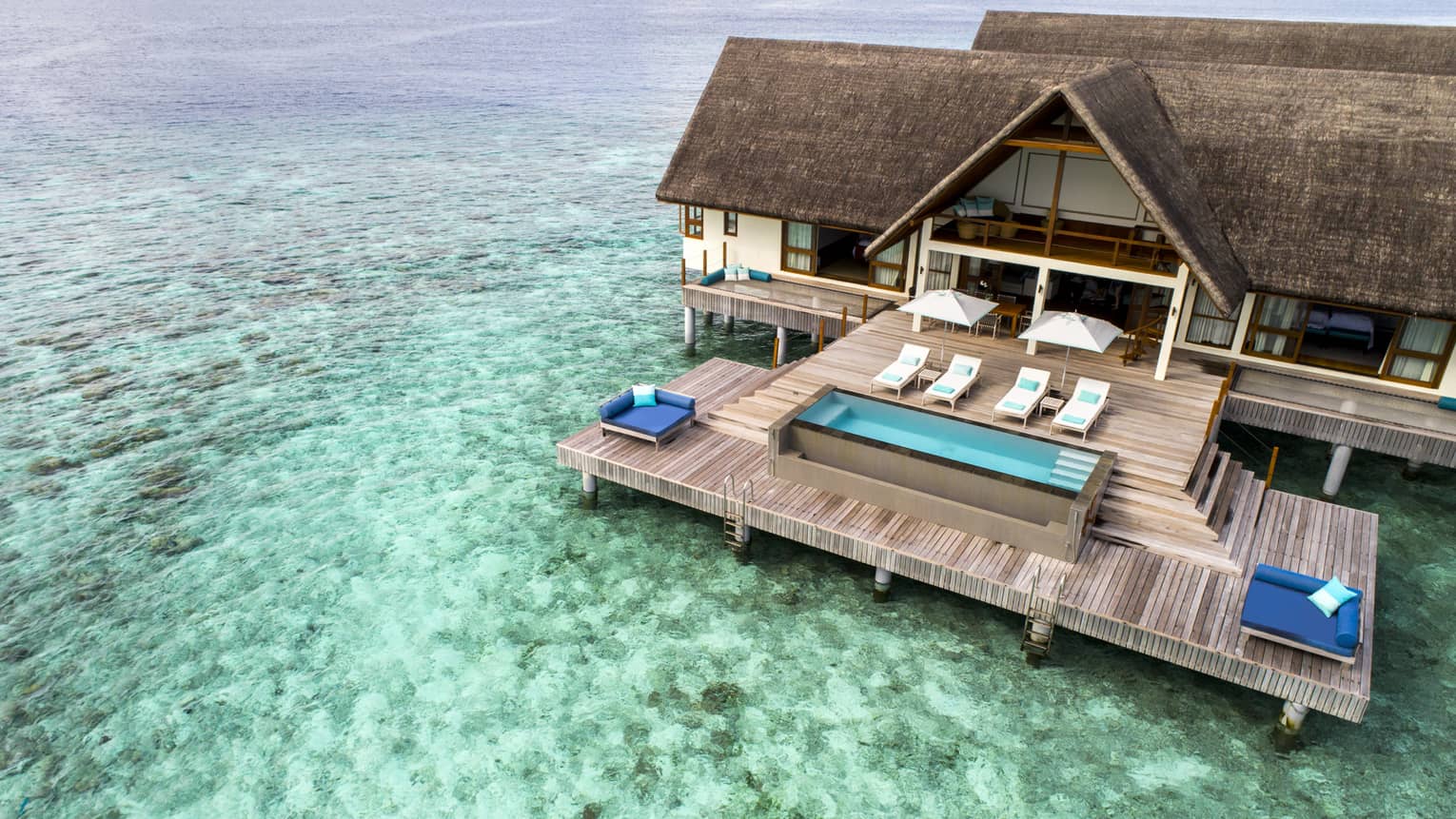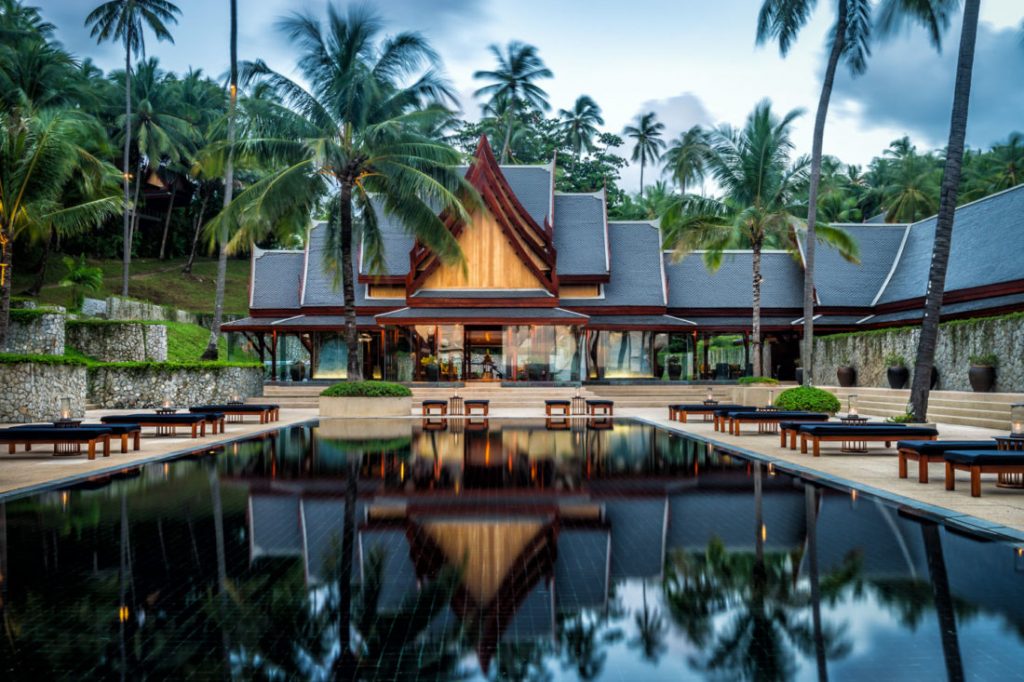
Manage FF&E specification, procurement, and product data at scale. Take on bigger projects with confidence and grow your firm with Fohlio. Book a consultation to explore these features today.
In the “Experience Economy,” it’s no longer enough to build the nicest resort with the most beautiful views, luxurious sheets, and overly cloying service. If you want to stand out, your resort design must honor the local culture, as well.
Take Roger Allen, founder and group CEO of Resources for Leisure Assets. He has spent 20 years working on multiple levels of project development in the hospitality and leisure industries. When asked what he looks for in a resort, he answers, “I have a thirst for new content and therefore always looking for a resort or destination that is offering me something different culturally and experientially.”

Read: Retail Experience is the Future, and It’s Here (The Psychology of Retail Store Design, Part 3)
And as to what makes a resort commercially successful: “The commercial success of a resort is really founded upon compelling guest experience provisions that elevate the property and its location as a brand.”
Nunzio DeSantis of Nunzio Marc DeSantis Architects agrees. When designing a resort, “Inspiration comes by way of the local people and their culture—the clothing, food, architecture, flowers, colors, landscape and skies of the surrounding site.”
DeSantis also makes it a point to locally source materials. Besides being a smarter use of resources, it creates “a more authentic bond to the area and its people … This is not only a visual experience, but also an intellectual one for our guest.”
How to Incorporate Local Culture in Resort Design
“The site and terrain, the trees, the sky, the water, the stars and the sun are all tremendous influences over project design,” says DeSantis.
Depending on where they are building a resort, there are few fundamental rules that inform their design:
- “When in tropical climates and beach locations, we use breeze ways between buildings to capture natural breezes for cooling. We incorporate landscape to provide living fences, green walls between units, and add private locations to provide moments of tenderness, privacy, and exclusivity.
- In the desert, we design buildings with large overhands and introductions of water to provide a cooling escape from the sun.
- When we are designing mountain resorts, we think about snowfall and how that impact and rests on our buildings.”
Jim Olson of Olson Kundig honors the cultural location and setting of JW Marriott Los Cabos Beach Resort and Spa by making sure that the hotel design captured the spirit of Mexico.
“The entrance and public spaces are modern but inspired by Mexican haciendas,” says Olson. “The natural environment and desert landscape comes right up to the building.”
Throughout the hotel are vistas of mountains, oceans, and the surrounding landscape, framed “like a Rothko painting,” says Olson. “This grand gesture connects guests with the magnificent power of the sea—a theme that is repeated over and over again in more intimate ways throughout the resort.”

Olson believes a resort should be an integral part of its location. “I think of it as one big continuous environment—landscape, architecture, interiors, and art that all flow together as one.”
Read: “Home Away From Home” is the Hottest Hotel Design Theme Right Now
How to Avoid Cultural Clichés in Resort Design
Just as important as incorporating local culture is making sure it’s authentic, and this can be tricky if you’re not a local yourself.
How do you make it authentic and avoid cliché? “Stories can be the glue that holds together any entertainment project,” says James Anderson, lead creative director at FORREC Ltd., a global entertainment design company.
Anderson’s firm was tasked to “create an identity” for a community in Florida, called The Villages. Anderson and his firm essentially whipped up a story to anchor the design. “The story centers around Ponce de Leon, a Spanish explorer, who accidentally discovered Florida, while looking for gold. He went on to try and find the fountain of youth. We established that the spring percolating up through the town square (which we designed), was in fact one that Ponce had believed could have been that very fountain.”

The story is pure fiction, but it became the backdrop to the residents’ lives, allowing them to create their own stories and memories.
Cashing in on Experience
Nothing is more personal than the way you experience your own life, and understanding (and incorporating) this in resort design can create a stronger link to happiness. And hasn’t that always been the goal?
According a study at Cornell University, consumers’ “evaluations of their material goods went down from the time of the initial purchase to the present, but their evaluations of their experiences tended to go up.” Experiences “are more open to positive reinterpretation, they tend to become more meaningful parts of one’s identity, and they do more to foster social relationships.”
Designing a memorable experience, above anything else, can be the deciding factor on whether a project succeeds or fails.
Design and build better with Fohlio. Book a consultation to explore these features today.
Sources/further reading:
The Architecture of the Exotic: Designing Luxury Resorts
Two New Resorts Reveal a Current Trend in Hotel Design
What the Next Generation of Resorts Will Need
How to Avoid Cultural Clichés in Storytelling
Welcome to the Experience Economy
Cashing in on the US Experience Economy
Expore Fohlio
Learn how to:
- Save days of work with faster specification
- Create firm-wide design standards
- Automate and centralize procurement
- Keep your whole team on the same Page
- Manage product data
- Track budget against cost in real time.
- Prepare for asset valuation
Published Mar 18, 2019

